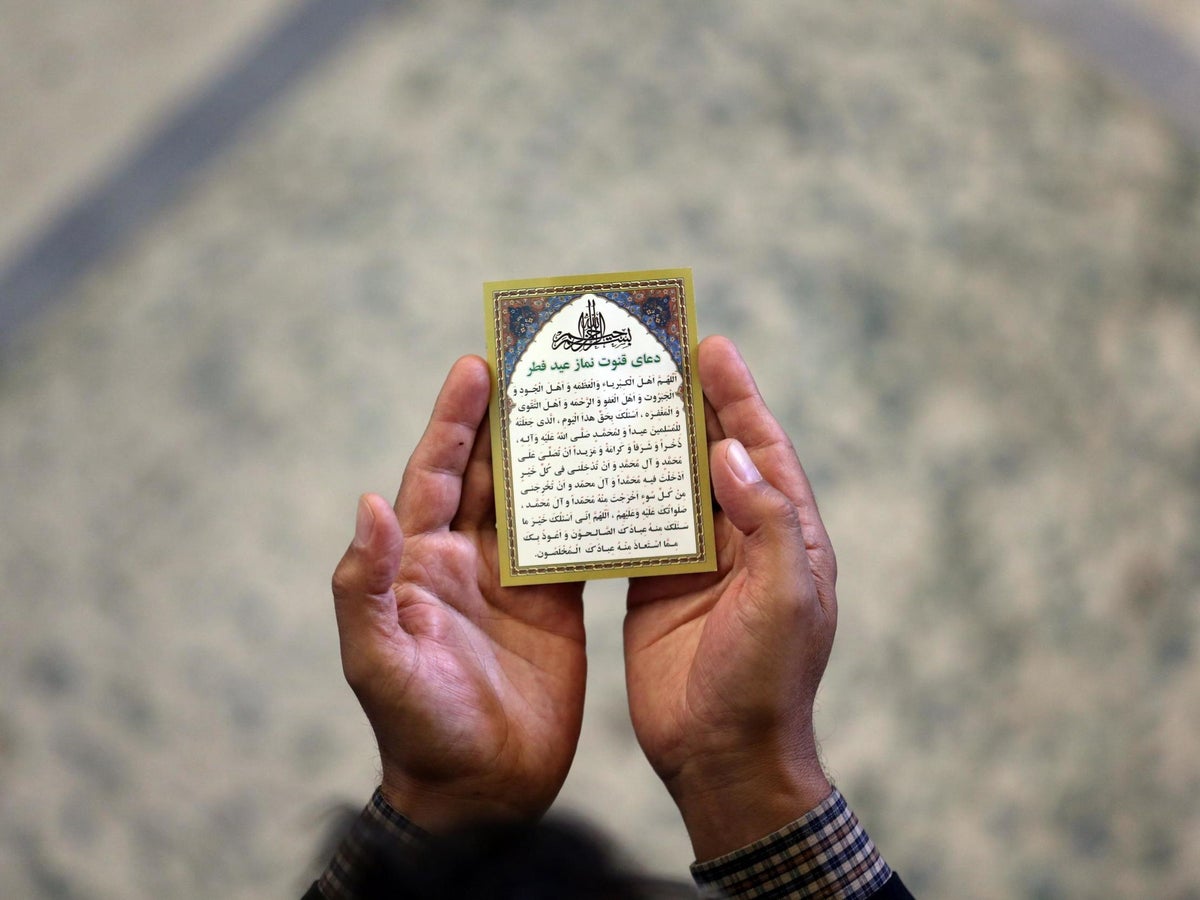
The second significant religious festival of Islam, Eid al-Adha, will begin on Wednesday (28 June) this year.
Eid al-Adha is one of two Eids, or days of celebration for Muslims worldwide, in a year, the Muslim Council of Britain explains. The festival coincides with the completion of Hajj, “which millions of people partake in every year”.
Known as the “festival of sacrifice”, Eid al-Adha commemorates the prophet Ibrahim’s readiness to sacrifice his son in order to demonstrate his dedication to God.
Here is everything you need to know about Eid al-Adha:
What is its significance?
During the festival of Eid al-Adha, Muslims acknowledge the devotion of Ibrahim, who was willing to sacrifice his son, Ismail, under the order of Allah SWT (God).
Ibrahim, also known as Abraham, is a prominent figure in Islam, Judaism and Christianity.
“This story in different versions is in the Quran, the Bible, and the Old Testament, which shows the common heritage of Judaism, Christianity, and Islam,” states the United Religions Initiative.
According to the Quran – the sacred religious book of Islam – just as Ibrahim was about to sacrifice his son, God replaced Ismail with a lamb, which was sacrificed instead.
“This command from Allah SWT was a test of Prophet Ibrahim’s willingness and commitment to obey his Lord’s command, without question. Therefore, Eid al-Adha means the festival of sacrifice,” states UK-based charity Muslim Aid.
What is the difference between Eid al-Adha and Eid al-Fitr?
Eid al-Adha and Eid-al-Fitr are the two major religious festivals observed in the religion of Islam.
Eid al-Fitr, which was celebrated in May in countries across the world, translates in Arabic to mean “the feast of the breaking of the fast”.
The festival marks the end of Ramadan, the Islamic holy month which involves Muslims fasting during daylight hours for 29 to 30 days.
Eid al-Adha coincides with Hajj, the annual Islamic pilgrimage to Mecca, in Saudi Arabia.
In pictures: Muslim pilgrims gather on Mount Arafat for Hajj
Show all 19When is it?
This year, Eid al-Adha begins on Wednesday 28 June and ends on Sunday 2 July.
How is the date of Eid al-Adha decided?
The Islamic calendar is a lunar calendar, meaning the dates of annual events may vary on an annual basis in accordance with the phases of the moon.
Eid al-Adha takes places on the 10th day of the final month of the Islamic calendar, Dhu al-Hijjah.
Dhu al-Hijjah is the 12th and most sacred month of the Islamic year, during which observant Muslims travel to Mecca for Hajj.
All able-bodied adults of the Islamic faith are expected to complete Hajj at least once in their lifetimes.
How is the festival celebrated?
As Eid al-Adha commemorates the sacrifice made by the prophet Ibrahim, Muslims typically celebrate the festival by carrying out a Qurbani, meaning “sacrifice” in Arabic.
The animal that is sacrificed – which is usually a goat, sheep, cow or camel – is separated into three parts.
“At least one third of the meat from the animal must go to poor or vulnerable people,” states international aid organisation Islamic Relief.
“Traditionally, a Muslim would keep one third of the meat for their family and give the final third to their neighbours.”
During the morning of Eid al-Adha, a special prayer called Salat al-Eid is recited in honour of the festival, ahead of the Dhuhr prayer at noon.
Muslims traditionally dress in fine clothes in celebration of Eid al-Adha, in addition to exchanging gifts.
Eidi is the Arabic word for a gift given to children by relatives during Eid al-Adha and Eid al-Fitr.
What food is eaten during Eid al-Adha?
While Eid al-Fitr is known as “sweet Eid”, Eid al-Adha is contrarily known as “salty Eid”.
As such, the food eaten during the second festival is predominantly savoury, including the animal which is sacrificed during the observance.
Arabian pastries called Ma’amoul are also eaten during both Eid festivals, as well as at night during the holy month of Ramadan.
Ma’amoul are made using ingredients including dates and nuts, and are often served in a ball or cookie shape.
How do you wish someone a happy Eid?
The phrase widely used to wish someone a happy Eid during Eid al-Adha and Eid al-Fitr is Eid Mubarak.
In Arabic, this phrase translates to mean “Blessed Eid”.







